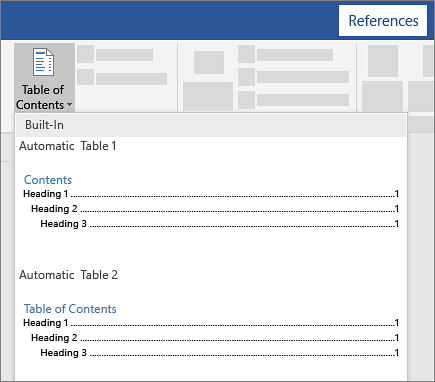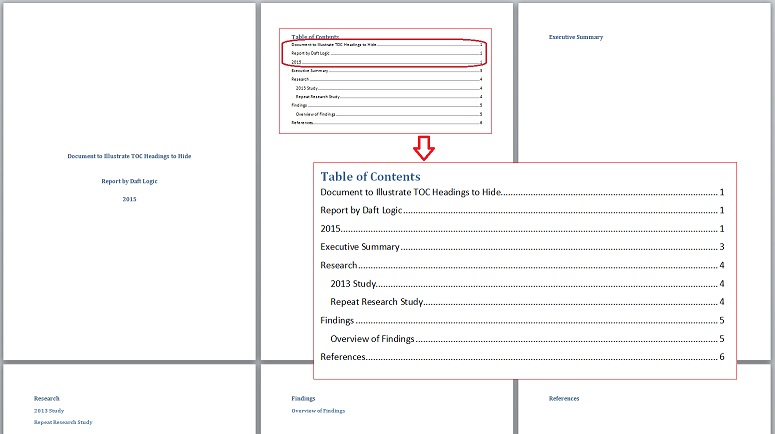
- #Microsoft word 2016 table of contents template how to#
- #Microsoft word 2016 table of contents template update#
- #Microsoft word 2016 table of contents template Pc#
However, you are not limited to just the categories that are included in these templates. By default, the templates that are included with Word have building block categories like "General" and "Built-In". These types help you to define and organize your building blocks and, although you cannot create additional building block types, you can create an unlimited number of categories for each type.Ĭategories are composed of an unlimited number of strings that you can define to organize your custom building blocks. There are 35 different WdBuildingBlockTypes constants. Although there are a limited number of these constants, that number is not small. Building block types are composed of a limited number of WdBuildingBlockTypes constants. NameĪ collection of building block entries in a template that are of the same type and category.Ī collection of all the building blocks in a template.Ī collection of building block categories.īuilding blocks are organized by type and category. The new objects and collections are listed in the following table. These enable you to create an organizational structure that works for your specific needs and to modify the structure for a specific solution. The building blocks object model includes three new objects and four new collections. When used together with content controls, building blocks can enable you to develop powerful solutions quickly and easily. A custom building block helps users insert rich content anywhere in a document by using a formatted drop-down list. However, with building blocks, you can organize entries in a way that enables you to determine how a user uses them.

#Microsoft word 2016 table of contents template update#
This allows you to quickly update your table of contents (either the whole thing or just the page numbers) after making amendments to your document.Introduced in Word 2007, building blocks are similar to autotext entries in previous versions.
#Microsoft word 2016 table of contents template Pc#


You can do this by using a different “Heading” style for each level.

It’s often a good idea to distinguish between different headings and subheadings. If you change the “Heading” style after this, all the headings that use this style will be updated automatically. To apply customized headings, go through each heading and subheading in your paper and click the required style. In the new window that opens, pick the formatting options required.Īlternatively, you could apply formatting to one heading or subheading, select the formatted text, right-click the “Heading” style in the menu and select “Update to Match Selection.” This will change the style to match the highlighted text.To create a table of contents, the styles we need are labeled “Heading.” MS Word comes with a number of default “Heading” styles (e.g., “Heading 1,” “Heading 2”). The “Styles” menu can be found on the “Home” tab in MS Word.
#Microsoft word 2016 table of contents template how to#
However, there’s an easier way: Use Microsoft Word’s “Style” options to create a table of contents that can be updated at the click of a button! How to Modify Styles If you like doing things the slow way, you could type this out manually and painstakingly modify it every time you make a slight change to a subheading. Whenever you write a longer paper, particularly a thesis or dissertation, you’ll need to include a table of contents. How to Create a Dynamic Table of Contents in Microsoft Word


 0 kommentar(er)
0 kommentar(er)
